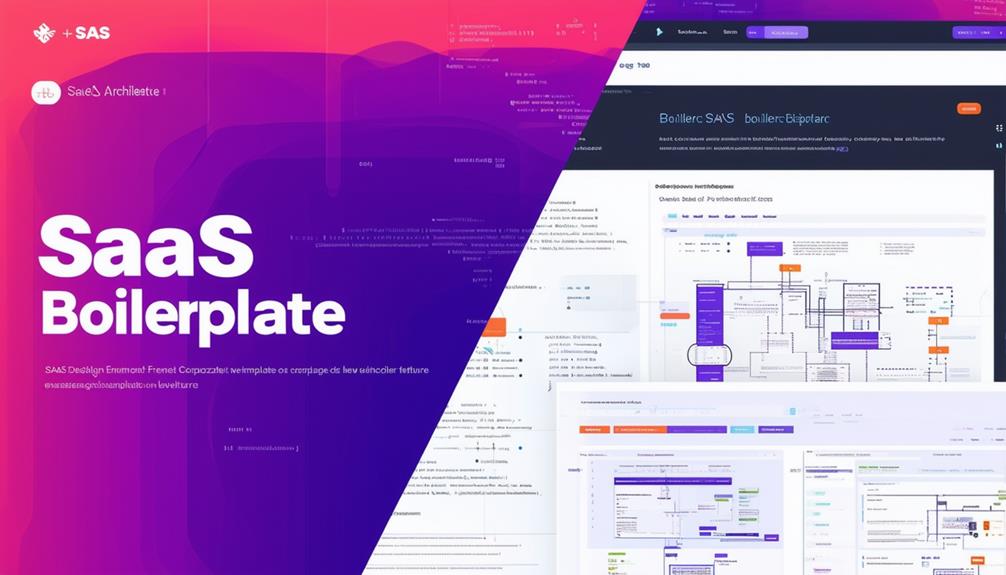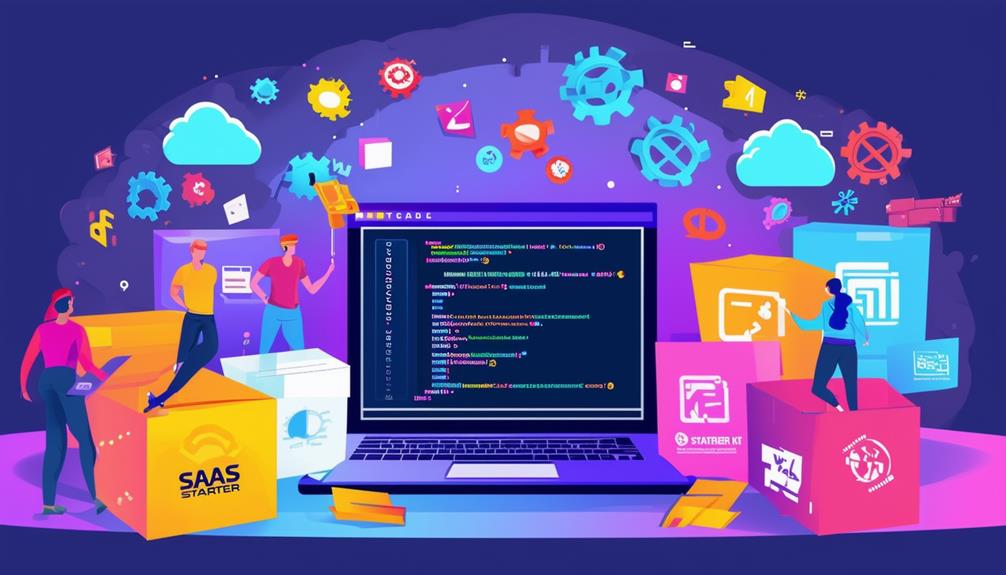When you’re starting a new SaaS project, you might wonder whether to use a boilerplate or a template. Boilerplates offer a robust foundation, complete with essential components for building your application from the ground up. On the other hand, templates focus on design, providing aesthetically pleasing layouts for marketing sites or e-commerce platforms. Understanding these differences is vital for making the right choice, especially when considering the unique needs of your project. But how do you determine which option aligns best with your objectives? Let’s break it down further.
Understanding SaaS Boilerplates
SaaS boilerplates serve as your foundational framework, providing essential code and structure to kickstart your software development journey. They offer a pre-built architecture that saves you from starting from scratch, allowing you to focus on unique features and functionalities that set your product apart. With a boilerplate, you get a set of standardized components, libraries, and configurations tailored for Software as a Service applications.
When you use a boilerplate, you benefit from best practices already implemented in the code. This means you’re less likely to encounter common pitfalls, and you can guarantee your application is more secure and efficient. The modular design of boilerplates makes it easy to customize and scale your application as your user base grows.
Additionally, by leveraging a SaaS boilerplate, you can greatly reduce your time-to-market. Instead of spending weeks or months on foundational work, you can quickly prototype and iterate on your ideas. This agility allows you to respond to user feedback and market demands more effectively.
Exploring SaaS Templates
While boilerplates provide a solid foundation, templates offer a more streamlined approach to designing the user interface and experience for your SaaS application. They come pre-loaded with design elements, layouts, and components, allowing you to focus on what matters most: creating a seamless user experience.
Using templates means you can jump right into building your app without worrying about the nitty-gritty details of design. You’ll find various templates tailored to specific niches and functionalities, which can save you time and effort. Whether you need a dashboard, a landing page, or user onboarding flows, templates often provide a ready-made solution that aligns with your needs.
Plus, templates are typically customizable, so you can tweak the colors, fonts, and layouts to fit your brand identity. You don’t have to start from scratch—just make adjustments and add your unique touch. This flexibility can greatly speed up your development process while ensuring a professional look and feel.
In short, when you opt for SaaS templates, you combine efficiency with design quality, enabling you to bring your vision to life faster and with less hassle.
Key Differences Between Both
Understanding the key differences between boilerplates and templates can help you choose the right tool for your SaaS development needs.
Boilerplates are extensive starting points that provide a complete framework for your application. They come with pre-built features, architecture, and best practices. This means you can hit the ground running, focusing on building unique functionalities without worrying about the underlying structure.
On the other hand, templates are more like blueprints. They offer a specific design or layout that you can customize. While templates can save you time in setting up the visual aspects of your app, they often require more work regarding backend integration and functionality. Templates don’t typically include the same level of foundational code or architecture that boilerplates do.
In essence, if you’re looking for a full-fledged foundation to expedite your development process, a boilerplate is your best bet. Conversely, if you need a starting point for design and are comfortable building out the functionality, templates might be the way to go.
Knowing these differences will empower you to make informed choices tailored to your project requirements.
Use Cases for Boilerplates
Boilerplates are perfect when you need a solid foundation for your application, allowing you to streamline development and focus on unique features. If you’re building a SaaS product from scratch, a boilerplate can save you countless hours by providing essential components like user authentication, database integration, and API setup right out of the box.
You might find boilerplates especially useful when working in a team. They guarantee that everyone adheres to a consistent architecture and coding standards, making collaboration smoother. If you’re tackling a complex project, a boilerplate helps you avoid the repetitive grunt work, letting you dive straight into what sets your application apart.
Another great use case is rapid prototyping. If you’ve got a brilliant idea but need to demonstrate it quickly, a boilerplate can help you whip up a functional prototype in no time. This speed can be invaluable for pitching to stakeholders or gathering user feedback.
Use Cases for Templates
Templates are incredibly useful for quickly creating visually appealing and functional front-end designs, making them ideal for projects where aesthetics and user experience are a priority.
If you’re working on a marketing site, landing page, or e-commerce store, templates provide a solid foundation that allows you to focus on content and branding instead of starting from scratch.
When you need to launch a product fast, templates can save you valuable time. You can easily customize colors, fonts, and layouts to align with your brand while ensuring a professional look.
For instance, if you’re developing a blog, a content-focused template can enhance readability and engagement, helping you connect with your audience more effectively.
Additionally, templates are great for prototyping. If you’re in the early stages of a project, using a template can help you quickly visualize ideas and gather feedback from stakeholders.
This iterative process can lead to a more refined final product.
To Wrap Up
To summarize, choosing between SaaS boilerplates and templates depends on your project needs.
If you’re looking for a robust foundation to build your SaaS application, a boilerplate is your best bet.
However, if you want to create a visually appealing marketing site or e-commerce platform quickly, templates are the way to go.
Understanding these differences enables you to make informed decisions and streamline your development process, ultimately leading to better outcomes for your projects.






